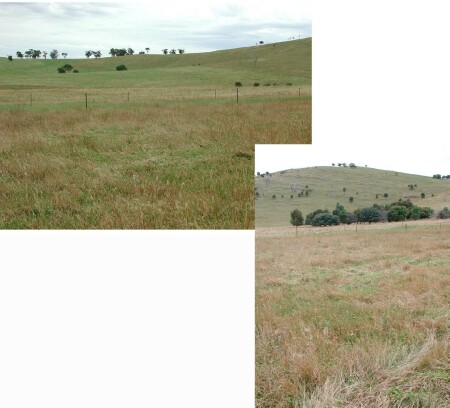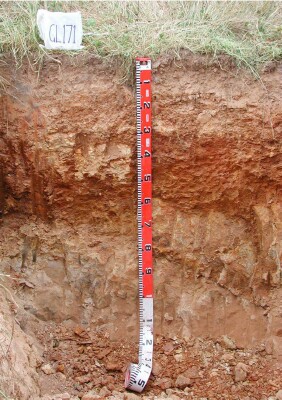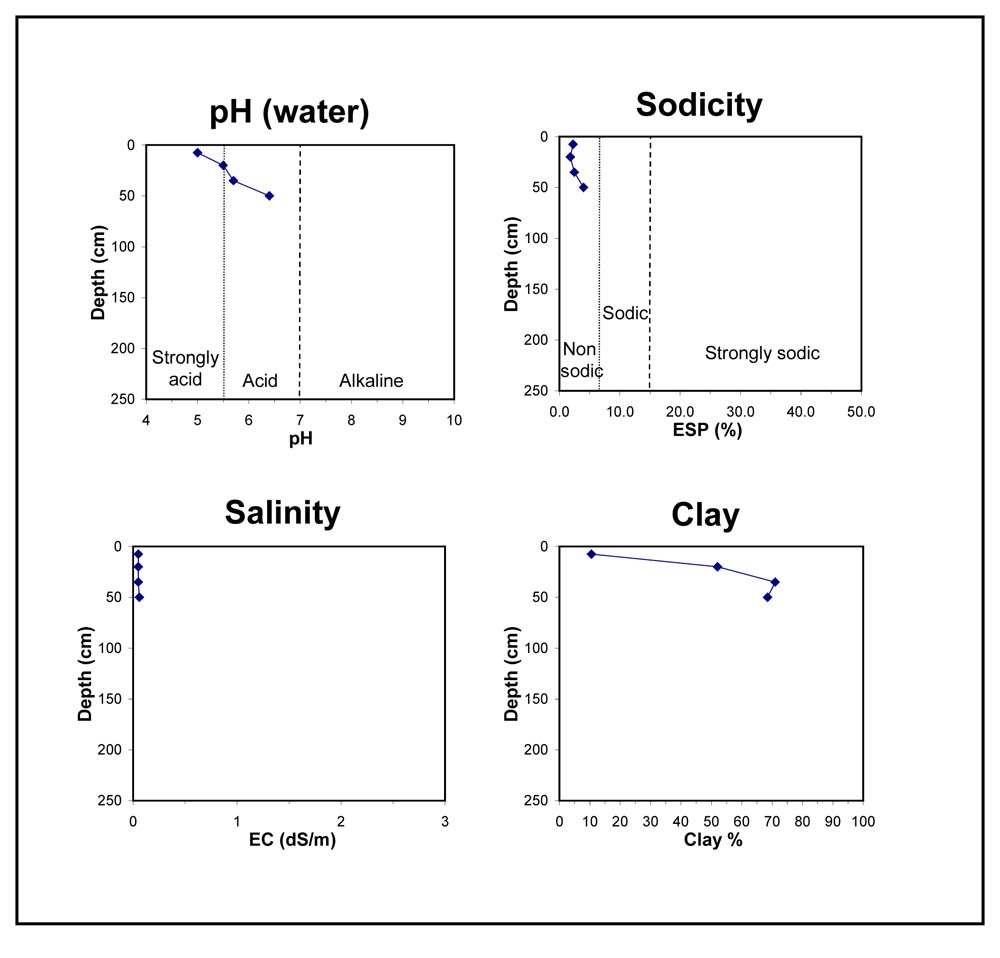GL171
| Site: GL171 | Land Unit: Ararat Marine Siltstone |
| Aust. Soil Class.: Mottled, Mesotrophic, Brown CHROMOSOL (confidence level 1) | |
 | General Land Unit Description: The dominant landform of this land unit is dissected undulating rises (represented by this site), although there are some rolling low hills (GL166) and some undulating plains that are mainly at the footslopes of the rises. The major land element is the gentler footslopes of the undulating rises and plains. This site occurs on footslopes of the sedimentary undulating rises east of Ararat. The major soil type found on these slopes tend to be reddish and well structured strong texture contrast soils (Chromosols) (GL171). The topsoil and subsoil can be quite acidic and there may be high aluminium levels in some soils. There is evidence of an occasional bleached horizon. The soils are often quite shallow. The soils on the dissected rolling low hills are generally shallow, although they can be quite well structured and are commonly Sodic Red Chromosols (GL166). Banded sedimentary rock outcrop is common on these soil types, especially on the exposed westerly aspects. Gully erosion on the plains below these hills and on the drainage depression is quite severe. |
Site Description:
| Slope: 7% | Geology: Cambrian / Ordovician marine siltstones |
| Landform pattern: Undulating rises | Position in landscape: Lower slope / footslope |
| Internal drainage: Well drained |
Soil Profile Morphology
| A1 | 0-15 cm | Dark yellowish brown (10YR3/4) fine sandy loam, sporadically bleached (10YR7/4) when dry, weak polyhedral (10-120 mm) to moderate polyhedral structure (2-5 mm), very weak consistence when dry, many medium angular platy quartz pebbles (6-20 mm) pH 5.0. Gradual transition to: |  |
| Subsoil | |||
| B21 | 15-25 cm | Yellowish red (5YR5/6) medium clay, strong subangular blocky structure (2-5 mm), weak consistence when dry, pH 5.5. Clear but wavy transition to: | |
| B22 | 25-45 cm | Yellowish red (10YR4/6) heavy clay, strong subangular blocky structure (5-10 mm), weak consistence when moist, many medium angular to angular platy sandstone pebbles (6-20 mm), pH 5.7. Clear transition to: | |
| B23 | 45-60 cm | Yellowish brown (10YR5/8) heavy clay, many red (2.5Y4/8) mottles, weak subangular blocky structure, pH 6.4. Transition to: | |
| C | 60+ cm |
Key profile features:
- Strongly acid topsoil
- Strongly acid subsoil
- Shallow soil
- Many coarse fragments
- Strong texture contrast between topsoil and subsoil
- Mottled subsoil
- Topsoil dispersive when worked when wet



